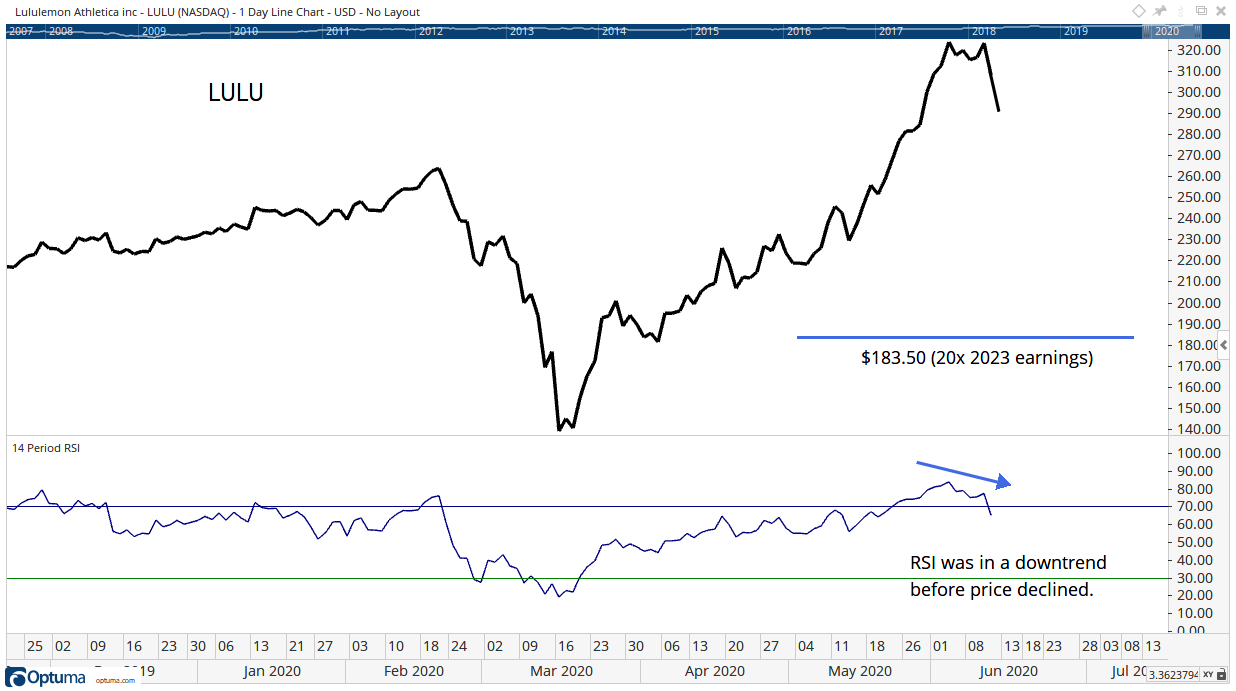Less than a month ago, analysts were picking winners from the work-at-home trend and many cited Lululemon Athletica (Nasdaq: LULU), a company known for yoga pants.
An article in The Wall Street Journal explained the appeal of LULU stock:
The coronavirus crisis has transformed athleisure wear into everyday wear, obviating the need for most other clothing for many consumers. Not surprisingly, shares of Lululemon Athletica are hitting new highs. Unlike consumers’ backsides, they may not face meaningful compression soon.

Source: The Wall Street Journal
It was a good story. It had logic. And many investors were sitting at home in athleisure wear reading the story. So it must be true.
But then, LULU stock dropped more than 10% after reporting earnings.

Source: Optuma
Earnings were about a penny below estimates. But even beating earnings might not be enough to justify the current stock price.
LULU is expected to earn about $4.38 per share in the current fiscal year. Like many retailers, the company’s fiscal year ends in January.
For the fiscal year ending in January 2023, 16 analysts already published earnings estimates. They range from $6.10 to $8.15 per share with an average estimate of $7.34. An optimistic price-to-earnings ratio of 25 provides a price target of $183.50 for LULU stock (it’s around $295 today).
Fundamentals are important but stocks often trade higher or lower than justified by earnings. LULU stock shows the importance of momentum indicators before an earnings report.
Simple indicators, like the RSI shown in the chart above, were warning of a decline. Momentum indicators should reach new highs when prices set new highs. At the recent price high, RSI failed to reach a new high. That’s called a momentum divergence and they are especially important when earnings are released.
Momentum failed to move up because smart money was selling ahead of the news. This could be hedge fund managers who knew inventory levels were increasing from their sources at LULU’s suppliers. Large investors simply have more access to information than we do.
They use their edge in gathering information to buy or sell. Those actions show up in momentum indicators.
Instead of reading stories, investors should consider the price action. Simple indicators can be more useful than a subscription to The Wall Street Journal.
• Michael Carr is a Chartered Market Technician for Banyan Hill Publishing and the Editor of One Trade, Peak Velocity Trader and Precision Profits. He teaches technical analysis and quantitative technical analysis at New York Institute of Finance. Mr. Carr also is the former editor of the CMT Association newsletter Technically Speaking.
Follow him on Twitter @MichaelCarrGuru.




